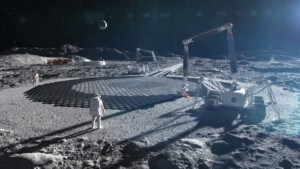With the recent discovery by NASA that water is flowing on Mars, the call for housing on on the red planet has never been more relevant. And right on time with the outpouring of interplanetary news, the “3D Printed Habitat Challenge for Mars” competition, sponsored by NASA and America Makes, has unveiled its winning designs.
The competition attracted over 160 applicants including Foster + Partners and the European Space Agency. Triumphing above all was a joint submission by SEArch (Space Exploration Architecture) and Clouds AO (Clouds Architecture Office), an architecture and space research collective which was awarded $25,000 in the process.
It’s especially fitting since SEArch and Clouds AO’s submission uses a “follow the water” approach to conceptualize, site, and construct the winning design.
In the brief, participants were challenged with creating a livable space for a four-person crew utilizing materials available on the Martian planet with a 3D printing device. SEArch and Clouds AO said the so-called ICE HOUSE proposal seeks to capture light and bridge the connection with the harsh external landscape of Mars and human life.
According to the judges, ICE HOUSE was notable for bucking the trend of creating an underground dwelling (a solution which the majority of applicants pursued). The proposal instead would make use of the anticipated abundance of surface ice, constructing a thin, yet sturdy 0.2 inch-wide ice shell structure, suitably protecting the four crew members. Such a feature would allow the inhabitants to gaze upon Mars’ landscape in the safety of a dwelling while also saving energy by not using artificial lighting. Natural light is also expected to boost morale.
During the research phase of the submission, the team of scientists, astrophysicists, geologists, structural and 3D printing engineers, and eight designers went through various testing procedures to ensure the durability and feasibility of the proposal. The extensive research they went to can be found on their website.










